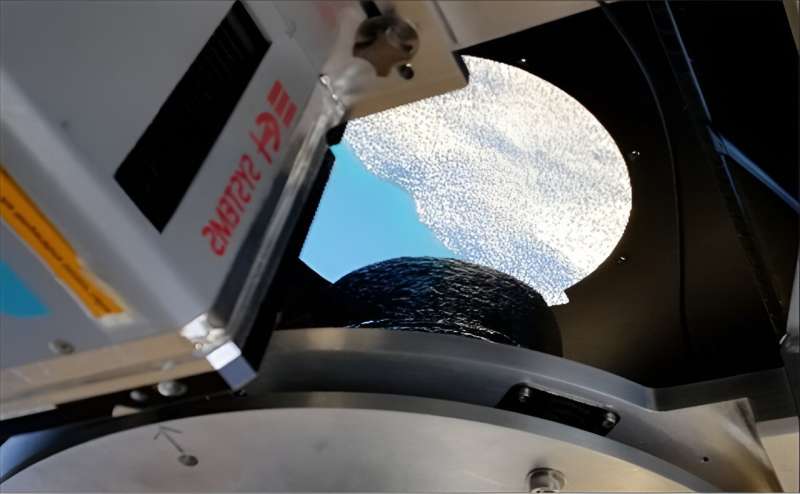This article has been reviewed according to Science X's editorial process and policies. Editors have highlighted the following attributes while ensuring the content's credibility:
fact-checked
trusted source
proofread
Mighty MURI brings the heat to test new longwave infrared radiometer

NASA's new Multiband Uncooled Radiometer Instrument (MURI) features a novel bolometer that detects infrared radiation without a cryogenic cooler, greatly reducing the cost and complexity of dispatching infrared radiometers into low-Earth orbit.
First-light data from NASA's new Multiband Uncooled Radiometer Instrument (MURI) shows its novel, uncooled microbolometer is operational, setting the stage for future space missions dedicated to observing Earth's surface temperature with a cost-effective instrument.
MURI, which was launched into low-Earth orbit in January 2023, is not NASA's first space-based infrared radiometer, but it is one of NASA's smallest. MURI flies through space at roughly seven kilometers per second as a hosted payload on Loft Orbital's YAM5 platform.
During its technology validation mission, MURI will demonstrate a state-of-the-art microbolometer thermal imager that functions without a cryogenic cooler. This unique technology could become the foundation of future science missions dedicated to observing phenomena like volcanic activity.
Bolometers detect infrared radiation in the form of heat and do not require cryogenic operation. These components are extremely sensitive to changes in temperature.
Traditional space-based thermal sensors rely on bulky cryogenic coolers to remain at a constant temperature of about -300°F. Cryogenic coolers add a lot of mass to space instruments. For example, the Moderate Resolution Imaging Spectroradiometer (MODIS), a space-based infrared radiometer serving aboard NASA's Aqua and Terra satellites, weighs more than 500 pounds.
By contrast, MURI only weighs only about 12 pounds. While its microbolometer still needs to be held at a constant temperature to maintain accuracy in space, that temperature can be room temperature.
In airborne and laboratory tests, MURI achieved an absolute radiometric accuracy of around 1%, which is considered world-class for longwave infrared radiometers of any size, and first-light data suggests the instrument performs just as well within the rigors of space.
MURI's initial observations suggest the instrument can measure the Earth surface temperature at a sensitivity as low as 123 millikelvin, which is comparable to existing Landsat instruments.
Creating an instrument so accurate and yet so compact required some innovative engineering. Philip Ely, Senior Director of Engineering at Leonardo Diagnostic/Retrieval Systems (DRS) and Principal Investigator for MURI, was especially concerned with image smear, a common issue with space-based remote sensors that collect high-resolution data.
"Our approach to solving this problem was to mount the bolometer focal plane array on a piezo stage, and then move the stage at the same velocity as the image to effectively stabilize the image on the focal plane array," said Ely.
Provided by NASA





















